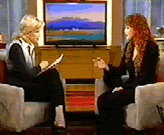The Marks and Tools of theAngelworker
Ancient angelworkers and angel magi used a marking on the forearm, usuallyhalfway between the elbow and hand. It would be placed on the leftforearm and would be drawn on with ink or henna, both of which wear offeventually and the tattoo can be redone. Permanent tattooing was frownedupon because of an ancient taboo against tattooing. Modern Jews (andMuslims) to this day will not get a tattoo, it is considered very disrespectfulto god; but the use of henna and ink which eventually wear off is definitelyacceptable to them (and to us). Henna can be ordered on line or atmany New Age book/gift stores. There is a neat body art henna kit youcan get from Amazon.com. I have one and love it.
The secret mark of the Angelworker was a Henna tattoo on forearm depictingone of the following symbols
![[Image]](https://northernway.org/wp-content/uploads/2018/02/dagazrune.jpg)
The most ancient form of
our marking, and actual size.
Modern workers draw the
henna tattoo smaller, no
bigger than an inch wide ![[Image]](https://northernway.org/wp-content/uploads/2018/02/XinCircle.jpg)
Rather sloppy, and you don’t
have to do the triangle
![]()
The Earthcross
Or Elemental Cross
rotated so it is an
X inside a circle
as shown on left.
In ancient Greek
this letter is theta
which in sigil magik
stood for Theos
and Thea, or God
& Goddess
Note how similar the two symbols are. The X represents angel wings,yes, but also it is the marking worn on the chest by angels, and the armposition used when they (and we) salute the Divine. Arms folded acrossthe chest in an X shape is one of the ancient ways to approach the Divine,and has been in continuous use since ancient times. As you may rememberfrom the Catechumen Lessons, the Eastern Orthodox Christians stand with armsacross chest this way when they approach the altar to receive the Eucharisteach Sunday, and catechumens about to be baptized adopt this posture, too.
This symbol was a letter in several ancient alphabets. Everyone knew whatit meant, but nowadays we have forgotten. It was related to the greek letterDelta which stood for Daemoni, or the Daemons, meaning “bright ones,” NOTmeaning evil demons. The greek letter delta came from the Phoenicianletter daleth, which came from a heiroglyph of an angel or god’s head. Youcan see these letters at this coolEvolutionof the Alphabet page. Angels (and lesser gods) were called daemons ingreek language until the word angeloi was adopted, meaning simply “messengers”and ignoring their brightness aspect. The European peoples had thisletter too, and the most ancient european alphabet (next to the Etruscan)is the Elder Futhark Rune alphabet. This letter is called Dagaz, anold proto-Germanic word meaning “day” and you guessed it, “brightness.” Here is an excerpt from an on line rune book describing the Dagaz rune. Note how coincidental that it fits with concepts like brightness, thebright ones, midday and the Surge.
Dagaz means “day,” and depicts the interplay and balance between polarities, light and darkness in particular. Dagaz is also the rune of midday (noon) and midsummer summer solstice), both representing times when the light of the sun is at its height. Metaphysically, these are times of power, strength of mind, and well-being.
As the light of day, Dagaz also represents the moments of sunrise (dawn) and sunset (twilight), and in this context it is the rune of total awakening. What is awakened is the light within yourself, which then becomes one with the light around you. In magic, dawn, noon, and sunset are considered power times – times when the portals between worlds open for an instant, and then close again.
Dagaz connects all six key points – four cardinal points, the divinely province above us inhabited by Gods, and all spirits of the Earth and Nature. All these points are balanced and integrated in this rune’s meaning, the rune uniting them in this manner and bringing them thus united into our everyday life.
When used in divination it signifies: happiness, success, satisfaction, activity, realization of the wished way of life. Dagaz denotes clarity and light – everything that has been unclear is now cleared. — from http://www.geocities.com/cheryl_rune2/dagaz.html
You can order a Dagaz Rune pendant like this one (for $13.95) from Capricorn’s Lair . They sell henna there, too. ![[Image]](https://northernway.org/wp-content/uploads/2018/02/dagazpendant.jpg)
Elaboration of the Tattoo Symbol
Since the Renaissance and the Rosicrucian movement, the angelworker tattoohas changed to a slightly more elaborate, more “angel looking” symbol. Youcan barely see one on the pavement of the tile near the foreground of thepicture below.

Another way Angelworkers recognize each other is to see a crystal pendantaround the neck or suspended from the belt. Unfortunately with thebig New Age obsession wth crystals starting in the 80’s, it is now hard tobe sure if that person is indeed an angelworker or just a new ager who likescrystals. Still, the wearing of a crystal lets the angels know whoyou are, and of course, the whole purpose of wearing it is so that it canbe used as a tool. Crystals magnify communication waves. Rememberthe crystal radio sets back in the early 1900’s, and boys in the 1950’s wouldbuy kits to make their own, the quartz crystal being the “engine” of thething. Watches can run on quartz, too. There is something tocrystals, something which new agers sensed, and despite their fanaticismand silly uses of crystals, the power remains.
Other tools for Angelworking:
Handheld crystal,
Crystal beads
Crystal wand
Crystal bowl or clear-glass bowl
Angelwater
Bell
Fan
Tau Robe with long angel “X” cord for chest and waist

